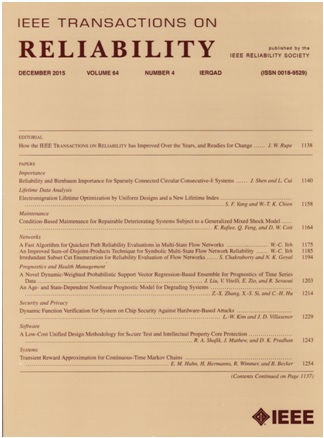ENADL: Towards Performance Improvement of IoT Networks Using Deep Learning-Based Node Fault Prediction
IF 5.7
2区 计算机科学
Q1 COMPUTER SCIENCE, HARDWARE & ARCHITECTURE
引用次数: 0
Abstract
The Internet of Things (IoT) has grown explosively with wireless technology integration. Several IoT applications require high data throughput, low data transmission latency, and high data gathering reliability. Since, the IoT network (IoTN) is generally dynamic and utilizes a multi-hop data transmission scheme for such applications, the throughput, latency, and network lifetime tend to degrade as the hops increase. Moreover, IoT devices (IoD) are low-cost, less computationally capable, and battery-limited, further impacting performance. A faulty IoD worsens network lifetime and throughput. Predicting faulty nodes and re-routing data can significantly enhance performance. This work proposes a node fault prediction framework to enhance data routing in dynamic IoTN, maximizing throughput and lifetime. The network is represented as a graph in which the IoD are the nodes. Then a novel deep learning model is proposed utilizing various node and edge features to predict the faulty IoDs. Particularly, the proposed edge and node features-accumulation deep learning (ENADL) method exploits features, such as Euclidean distance between nodes, residual energy level of nodes, and type and number of messages passed between edges to predict the forthcoming faulty IoD. Thereafter, data routing is performed over the updated network topology. Furthermore, to improve the network lifetime, the node's degree and betweenness centrality measures-based energy allocation method is also proposed. Finally, numerical results on simulated and real-field testbeds demonstrate the ENADL method.s effectiveness in predicting faulty nodes and re-routing data packets. This results in maximized network throughput and lifetime as compared to several existing methods.ENADL:使用基于深度学习的节点故障预测来提高物联网网络的性能
随着无线技术的融合,物联网(IoT)呈爆炸式增长。一些物联网应用需要高数据吞吐量、低数据传输延迟和高数据采集可靠性。由于物联网网络(IoTN)通常是动态的,并且针对此类应用使用多跳数据传输方案,因此吞吐量、延迟和网络生命周期往往会随着跳数的增加而降低。此外,物联网设备(IoD)成本低,计算能力较差,电池有限,进一步影响性能。IoD故障会影响网络的生存时间和吞吐量。预测故障节点和重路由数据可以显著提高性能。本文提出了一个节点故障预测框架,以增强动态IoTN中的数据路由,最大限度地提高吞吐量和寿命。网络用图形表示,其中IoD是节点。然后提出了一种新的深度学习模型,利用各种节点和边缘特征来预测故障iod。特别地,提出的边缘和节点特征积累深度学习(ENADL)方法利用节点之间的欧几里得距离、节点的剩余能量水平、边缘之间传递的消息类型和数量等特征来预测即将发生的故障IoD。然后,在更新后的网络拓扑上进行数据路由。此外,为了提高网络的生存期,还提出了基于节点度和中间度中心性度量的能量分配方法。最后,通过仿真和实场试验验证了该方法的有效性。S在预测故障节点和重路由数据包方面的有效性。与现有的几种方法相比,这可以实现最大的网络吞吐量和生命周期。
本文章由计算机程序翻译,如有差异,请以英文原文为准。
求助全文
约1分钟内获得全文
求助全文
来源期刊

IEEE Transactions on Reliability
工程技术-工程:电子与电气
CiteScore
12.20
自引率
8.50%
发文量
153
审稿时长
7.5 months
期刊介绍:
IEEE Transactions on Reliability is a refereed journal for the reliability and allied disciplines including, but not limited to, maintainability, physics of failure, life testing, prognostics, design and manufacture for reliability, reliability for systems of systems, network availability, mission success, warranty, safety, and various measures of effectiveness. Topics eligible for publication range from hardware to software, from materials to systems, from consumer and industrial devices to manufacturing plants, from individual items to networks, from techniques for making things better to ways of predicting and measuring behavior in the field. As an engineering subject that supports new and existing technologies, we constantly expand into new areas of the assurance sciences.
 求助内容:
求助内容: 应助结果提醒方式:
应助结果提醒方式:


